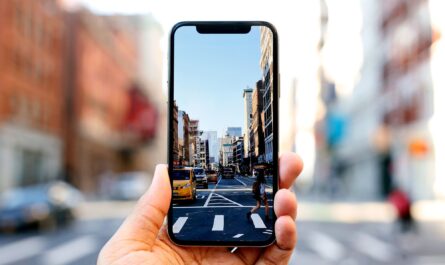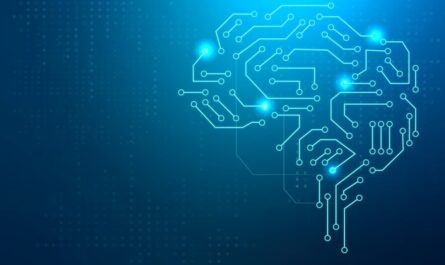The Internet of Things (IoT) has opened up new possibilities for connecting everyday devices in homes to the internet. A growing number of household appliances can now be controlled and monitored remotely through mobile apps or voice assistants. This connectivity brings enhanced convenience and control over various aspects of home automation.
Smart lights are one of the most popular IoT devices for homes. LED bulbs from companies like Philips Hue or Lifx can be controlled via smartphone to adjust brightness and switch on/off. Homeowners can set up automation routines to turn lights on/off at specific times or in response to other triggers. For example, porch lights could automatically switch on at dusk. Lights can also be controlled remotely when away from home. This provides peace of mind when forgetting to switch off lights before leaving the house. Voice assistants like Alexa further simplify light control with voice commands.
Security cameras have also benefited greatly from IoT integration. Cameras from Arlo, Ring or Nest have built-in WiFi to stream live video to phones. This allows monitoring the home from anywhere. Advanced AI-powered cameras can also identify people, vehicles or animal motion. Notifications are sent when detection occurs, providing alerts even when away. Video storage options in the cloud enable reviewing past recordings. Integrated lighting and sirens in some cameras further enhance security by scaring off potential intruders.
Thermostats are another key appliance gaining smart connectivity. Smart models from Nest, Honeywell, and Ecobee can be controlled and adjusted remotely using apps. Homeowners have precise temperature control even when on the go. Thermostats can also be programmed with individual schedules for each day of the week. This automatically adjusts heating and cooling as per daily routines. Linking thermostats to other smart devices or geo-location also enables greater automation. For example, temperature can be reduced when leaving home as detected by smart locks or phone location. Over time, usage patterns are learned to optimize energy efficiency.
Smart home appliances with WiFi connectivity are also becoming more mainstream. Refrigerators from LG, Samsung and others have internal webcams and sensors to monitor inventory levels. Grocery and shopping lists can be automatically generated based on contents. Appliance faults are also detected early using diagnostics. Washing machines and dryers from companies like GE and Whirlpool are gaining abilities like remote start, notifications on cycle completion and troubleshooting. Connected dishwashers similarly provide alerts and notifications for maintenance tasks to the homeowner.
Smart plugs provide an affordable and simple way to make regular appliances smart. Plugs from TP-Link Kasa, Belkin and other brands turn any outlet device into an IoT product. Lights, fans and other products can then be remotely controlled and scheduled using the corresponding app. Automations can also be set up, like turning off fans and lights at bedtime. Advanced plugs provide energy monitoring in addition to on/off control. This helps track electricity usage of individual devices and appliances for optimizing efficiency.
Garage door openers are also entering the smart era. Models from Chamberlain, Ryobi and others integrate with WiFi for remote control of the garage door using a smartphone. Homeowners can check if the garage door is open or closed from anywhere. Combining with other automations provides enhanced security. For example, the door could automatically close and lock if no one is home as detected by other sensors in the smart home ecosystem. Advanced functions being explored include visual identification of vehicles entering the garage as an added security layer.
Intelligent IoT Made Accessible by Big Tech
While smart home devices were an early vision of IoT, integration pains and high costs initially limited widespread adoption. However, major tech companies like Google, Amazon and Apple have made IoT practical and affordable for the average home through their respective hubs and platforms.
Google Nest bundles an array of smart home products with its Works with Nest program to deliver a seamless experience. The Google Home smart speaker and display serve as control points powered by Google Assistant. Apple takes a similar walled garden approach with its HomeKit-compatible accessories working harmoniously with Siri via HomePod or iOS devices. Amazon too provides compatibility and control of many IoT brands through Alexa and Echo devices. Voice is often the simplest interface especially for novices.
Deeper platform-level integrations allow scenarios where actions across different brands of devices are automated. For example, notification from a Nest Cam could trigger Philips Hue lights to switch on via IFTTT applets. Over time, as more casual users adopt individual devices, the appeal of a unified smart home will grow stronger. Platform vendors have a significant role to play in driving such integrations for an out-of-box experience. 5G and Matter standards also aim to deliver interoperability at a connectivity and OS level in the long run.
Security and privacy concerns also pose challenges for broader adoption of IoT. Major tech platforms have focused on building trust through transparent data policies and local processing/storage where feasible. On-device AI, secure boot processes and end-to-end encryption are also increasingly standard for responsible connected home implementation. Still, home networks integrating myriad devices present more attack surfaces. Ongoing diligence around firmware updates, strong passwords and physical access control will thus remain important responsibilities for users.
As enabling technologies continue advancing, connected home experiences are set to become richer, more inclusive and frictionless over time. With sustained efforts across industry to address challenges around security, privacy and interoperability – IoT is poised to truly realize the vision of the intuitive smart home for millions more households globally in the near future.
*Note:
- Source: Coherent Market Insights, Public sources, Desk research
- We have leveraged AI tools to mine information and compile it



